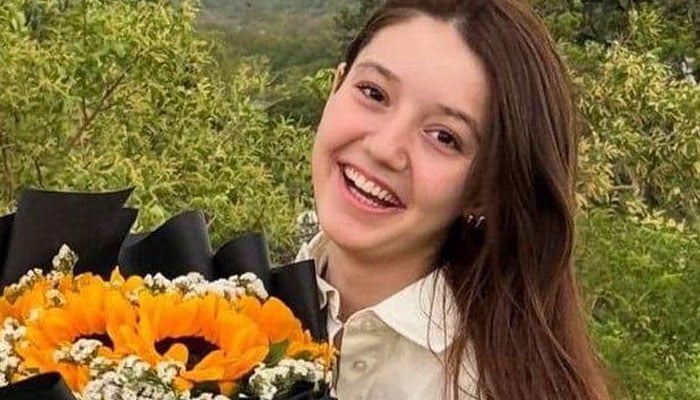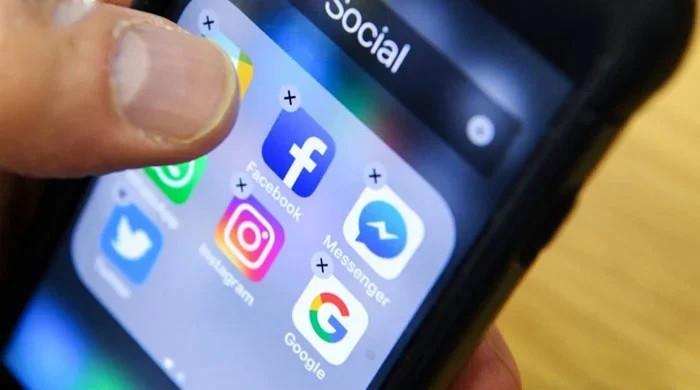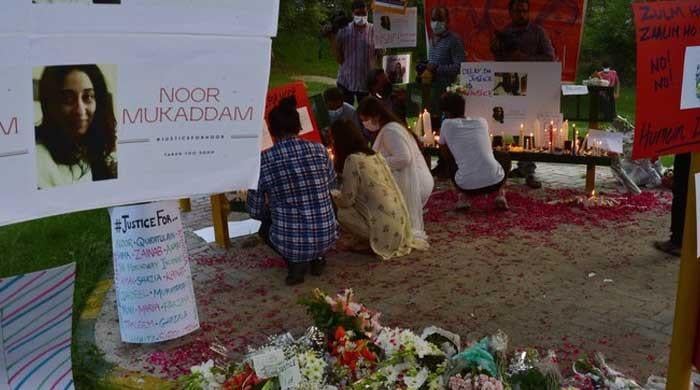Sana Yousuf's murder triggers fear
Shama , a 27-year-old woman, told her mental health practitioner that memories from an incident of stalking, rejection, and ensuing bullying have resurfaced following Sana Yousuf’s murder
June 06, 2025

“I am just thankful he didn’t kill me!”
Shama had suppressed memories from an incident in university when she had rejected a boy’s ‘offer’. The boy had taken it quite hard, and Shama had to suffer constant catcalling from his friends when she passed them, as well as verbal bullying in class by using derogatory yet ambiguous words to target her.
This had taken a toll on Shama, but she never sought help either from her family or teachers. She confided in her small group, mostly women, who were unable to help. She felt vulnerable and anxious throughout her time after this and was even on the verge of dropping out.
Now, Shama is working and had thought the university episode was behind her, but the Sana Yousuf murder by a stalker has triggered all the negative feelings she felt so many years ago. She is unable to cope with them and has sought help.
Shama is not the only one affected by the teenager’s murder. According to a mental health practitioner based in Karachi, the number of girls and women between the ages of 10 and 60 coming in for sessions following Sana Yousuf’s murder has spiked to more than 50 a day.
The mental health practitioner added that girls and women are experiencing vicarious trauma following the teenager’s murder, which occurs when an individual learns about or hears about traumatic events experienced by others, leading to negative psychological impacts. This can happen through media exposure, such as news or social media, and can result in symptoms similar to those experienced by the direct victims of the trauma.
*Asma, who is one of the major income earners of her family, travels to and from work via public transport. Since the murder, she has been feeling extremely vulnerable and is unable to cope with the stress, which is why she reached out to a mental health practitioner.
“I travel to work using public transport, and every day I am abused and harassed by random men of all ages. I feel anxious. I can’t share this with my family because they will be unable to help me and will feel anxious. I can’t leave my job. It is tough working under constant stress.”
She said, “I have never thought about raising my voice. And now with this incident, I will never say anything because I fear someone might kill me.”
*Farhana, who was planning to begin a food vlog during her summer vacation. She created an ID and began uploading faceless content, but now she is reconsidering this.
“I deactivated my account because I am getting extremely weird comments in my DM. They can’t even see my face, and even then, the comments are scary. I‘m just scared that I may offend someone, and they kill me.”
Sixty-year-old *Marium said, recalling the harassment she experienced when she was younger, “A woman could not walk in a public area without someone throwing a paper with their number on it, inviting her for tea or coffee, or just complimenting her. This is an extremely traumatic thing, especially since I could not tell anyone. I felt ashamed and believed I would be blamed for this. My mother would make me stay home because we were not allowed to tell our father or brothers.”
Marium said she was happy she didn’t say anything to these men, who knew what consequences she would have faced. “I am glad I don’t have a daughter; otherwise, she would have experienced all the abuse silently.”
Marium said that despite all the girl and women empowerment, women and girls are targeted and are vulnerable even today, social media is just another platform where they can be abused and harassed.
All these women fear that any action that can be interpreted as a rejection may lead to violence. This invisible power is causing fear and stress among women, bringing back bad memories.
Umar Hayat, the man accused in Sana Yousuf’s murder case, is a bully and stalker who probably has low self-esteem and is an underachiever.
Brought up in a society that gives boys a privileged status based on their gender, some develop a grandiose delusion. They believe in their importance, which is mirrored in their parents and others. They begin to believe that they have the right to get their way all the time. Rejection is unacceptable and is a punishable act. Their inflated self-image and ego do not allow them to see women as individuals who only exist if linked to a male.
This is why Umar Hayat probably believed that Sana, an accomplished young woman, was online trying to attract attention, and therefore, he should claim her before someone else. Her rejection of his ‘offer’ was a crime in his mind that had to be punished.
Abusers and cyber criminals, like Hayat, are bullies and generally weak. They have never achieved anything in life and are jealous of those who have. They want to dominate others and improve their social status. They may have low self-esteem and want to feel better about themselves, and the only way they can do this is by trying to control others.
Incidents like the murder of the teenager who was just going about her life, making online content, affect not only young girls but older women. It reveals how vulnerable they are, which leads to finding solace in anonymity, and many retreat from the public.
In this case, many will retreat from online spaces, reducing their presence, which may embolden harassers, abusers, and criminals to believe that they have power over women even online. It will also send a message to online users, especially women, that these bullies are more powerful and can cause harm. And in the case of Sana, it came true.
Online harassment and abuse are a global issue for the vulnerable, especially children, women, and the trans community. According to UN Women, “Millions of women and girls are affected by digital abuse and technology facilitated violence every year. Studies suggest that between 16 and 58 per cent of women have experienced this type of violence. Data from different regions confirm that technology-facilitated violence against women happens everywhere.”
The data was further simplified by UN Women, into regions highlighting the seriousness of the situation: 50% of women over 18 years old have experienced some form of technology-facilitated abuse in their lifetime from 12 countries across Eastern Europe and Central Asia; 60% of women internet users in Arab States have experienced online violence and 28% from data collected from five Sub-Saharan African countries.
Data from worldmetrics.org reveals that approximately 41% of women and 37% of men have experienced cyberstalking in their lives. Data on the trans community is not available. It further adds that over 70% of cyberstalking victims experience significant emotional distress, and 60% of cyberstalking victims also experience offline stalking. However, only 1 in 3 victims of cyberstalking report the incident to law enforcement.
According to a research by Plan International and CNN's As Equals which gathered data from 600 women and girls between the ages of 13 to 25 across nine countries found that girls and women are frequently harassed online and 1 in 10 (11%) had ‘faced harmful online experiences daily or almost daily’, while 40% from them have reported that have been harassed at least once a month.
Laws can help protect people online, but more importantly, actions are needed that can deter abusers, harassers, and other criminals from pursuing and harassing others online.
Online allies, including men, can be created to help encourage and empower young people, women, and trans people to feel safe and stay online. If a threat arises, they can assist in countering it by identifying and shaming the perpetrators and promptly notifying the authorities.
The authorities need to develop and enforce a system that not only protects people online but also offline, because, as we have seen in the unfortunate case of Sana Yousuf, online threats can translate into the real, offline world with deadly consequences.
It’s time to make social media safe for vulnerable people.
*Names changed on request
Disclaimer: The viewpoints expressed in this piece are the writer's own and don't necessarily reflect Geo.tv's editorial policy.









